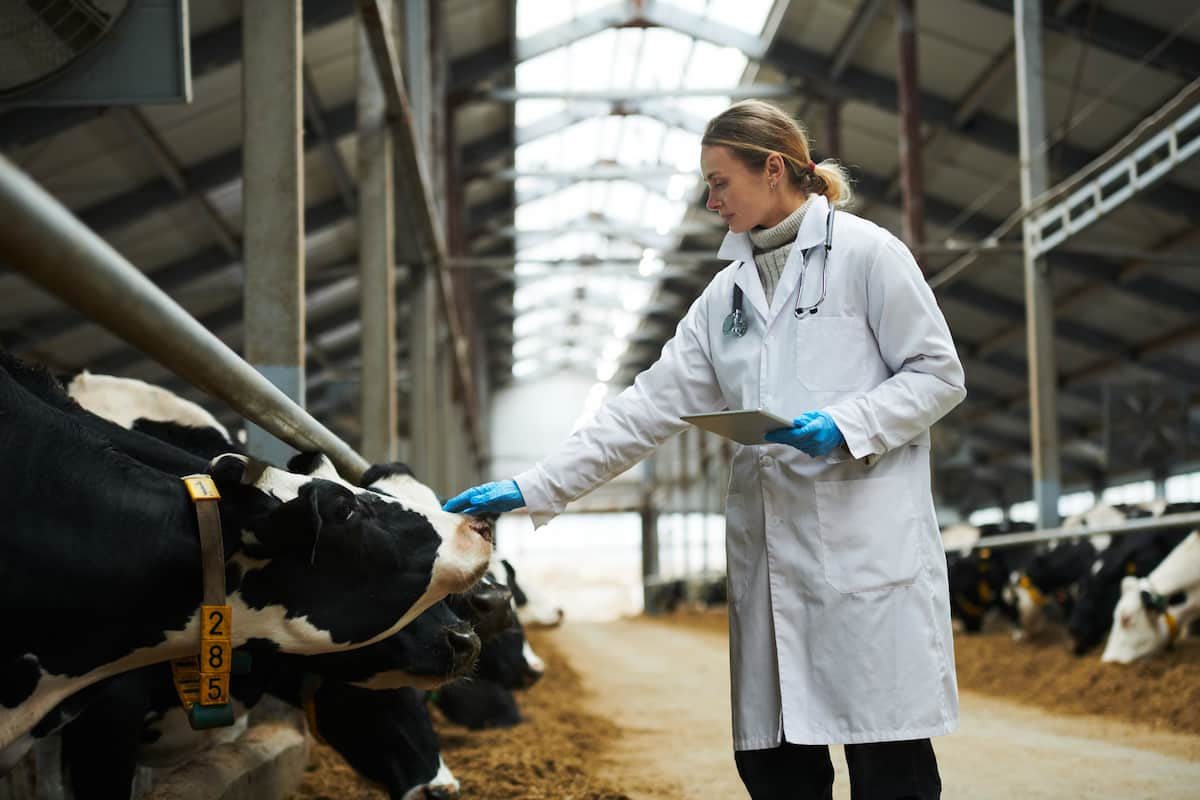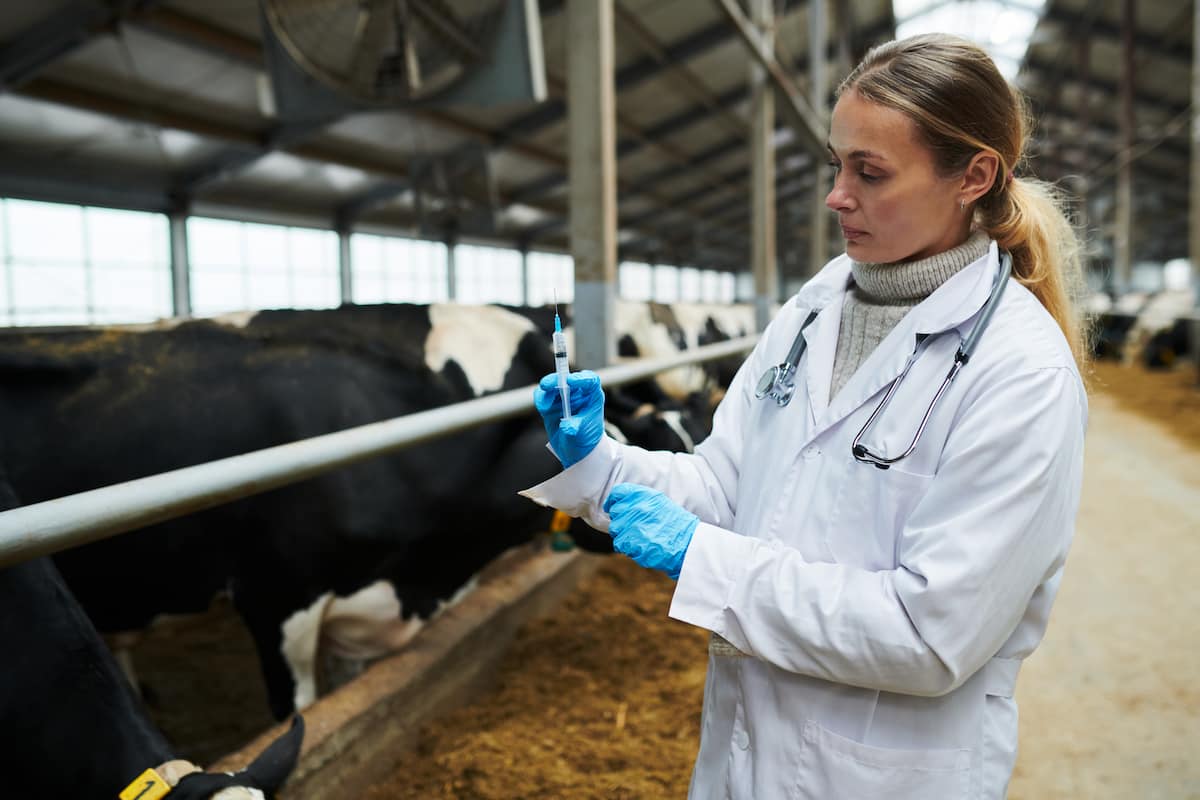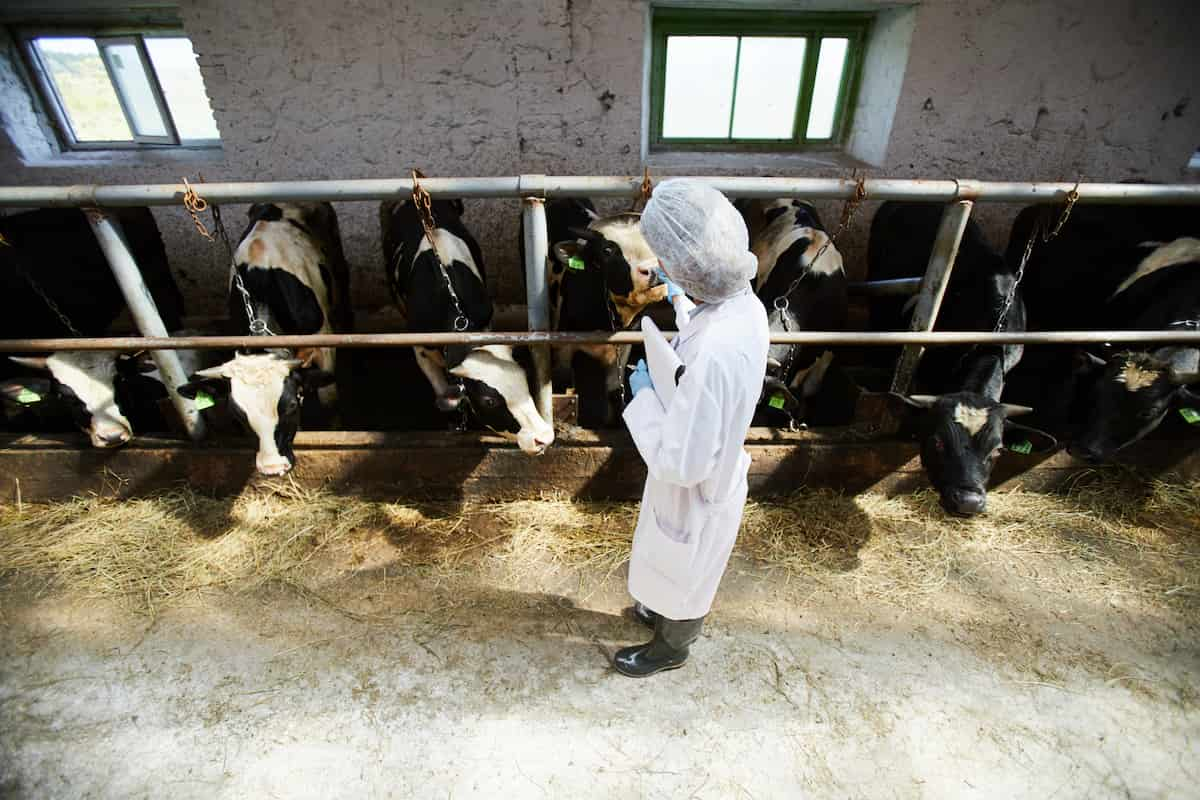Actinomycosis is a chronic bacterial disease that mostly affects dairy cows and causes swelling around the mandibular area, impairing their feeding ability. It causes rarefying osteomyelitis, a bone disease affecting cow skull bones. The bacteria Actinomyces bovis, which is often present in soil and can enter the body through wounds or other traumas, is generally responsible for the illness. Effective treatment often includes antibiotics and surgery to lower the risk of infection. In contrast, prevention includes excellent cleanliness and rapid treatment of wounds or injuries.

Actinomycosis Management in Cattle
Actinomyces are gram-positive bacteria, anaerobic bacteria that can cause disease primarily in cattle and other animals like buffalo, and swine. A lumpy jaw is a chronic and progressive abscess that commonly involves the mandible, maxillae, or other bony tissues in the head. Clinical signs can provide a presumptive diagnosis of the disease.
Still, a definitive diagnosis requires a culture of the organism from the lesion, which is difficult due to anaerobic growth conditions. Treatment aims to kill the bacteria and halt the spread of the lesion. AIn addition, antibioticsare commonly prescribed for an extended duration to eliminate bacterial infections.
Causes of Actinomycosis in Cattle
- The Actinomyces bovis bacteria is the principal cause of Actinomycosis in cattle. However, there may be a connection with other bacteria, such as Corynebacterium pyogenes and Staphylococcus.
- These organisms can enter the body through wounds or injuries, causing persistent infection and swelling around the mandibular area, hindering feed intake.
Disease Cycle of Actinomycosis in Cattle
Actinomycosis is a disease that mostly affects cattle between 2 and 5 years old. It is a rare disease that rarely spreads from one animal to another. The bacteria that cause the disease, called Actinomyces bovis, can live in an animal’s body and spread infection through cuts or wounds.
The infection can be caused by abrasions in the buccal mucosa caused by coarse food or surface material when chewing or by the dental alveoli when a tooth erupts. The bacteria can also be found in healthy cattle’s digestive systems. They can get into subepithelial tissues when things on the surface hurt them.
In case you missed it: Mastitis Disease Management in Cattle: Symptoms, Treatment, and Prevention

What are the Symptoms of Actinomycosis in cattle?
- Actinomycosis shows up in cattle as hard, round, painless growths on the mandible or maxilla, usually at the level of the central molar teeth.
- As the infection worsens, it can damage the bone tissue and cause large granulomatous masses to form on the surface of the jaw. Then, sinus tracts can form.
- It can affect the process of chewing, which can hurt digestion and lead to a loss of health in general.
- Abscesses can grow and create sinus tubes that lead to the skin’s surface, where pus can drain. If you look in the mouth, you might find loose or missing teeth, and the animal might have bad breath, called halitosis.
- Loose teeth can cause drooling and trouble swallowing, which makes it hard to eat. The nearby bones may also be affected in cases that have gone on for a long time.
- The disease doesn’t spread through the lymphatic system and usually doesn’t affect nearby lymph nodes.
Diagnosis of Actinomycosis in Cattle
- A veterinarian may physically examine and take pus or fluid samples from the lesions to diagnose Actinomycosis in cattle. They may also use X-rays or ultrasounds to find out how bad the infection is and if there is any damage to the bones underneath.
- The Actinomyces bovis bacteria can be grown in a lab and identified to make a sure diagnosis. There may also be other bacterial infections, tumors, or tooth root abscesses that could be the cause.
Treatment and Control of Actinomycosis Disease
- There is currently no vaccination available to protect cattle from Actinomycosis. Control techniques include isolating sick animals and treating them appropriately.
- Contaminated goods must be removed, and animals with discharge foci must be euthanized. Antibiotics must be administered by a skilled veterinarian, as this is the primary therapy for the condition.
- To eradicate the bacterial infection, the veterinarian may prescribe long-term courses of antibiotics.
- Furthermore, giving appropriate nutrition and reducing feed abrasion may aid in the reduction of Actinomycosis in cattle.
Preventive and Actinomycosis Management in Cattle
- To avoid Actinomycosis in cattle, avoid coarse, stemmy feeds or feeds containing plant awns, which may harm the mucosal epithelium. Because A. bovis is an inmost ruminant oral flora, the key to preventing exposure to the risk factor.
- Multiple cases in a herd are not caused by the pathogen’s infectious nature, but rather by broad exposure to the risk factor, such as coarse feed.
- Providing a nutritionally appropriate feed devoid of coarse or abrasive materials to cattle will help lower the prevalence of Actinomycosis.
Ideal Management Practices for Actinomycosis in Cattle
- Actinomycosis management in cattle necessitates proper husbandry methods. Avoiding coarse, stemmy feeds or feeds containing plant awns that may injure the mucosal epithelium can aid in disease prevention.
- To avoid spreading diseases, affected animals must be isolated and treated. In addition, contaminated goods must be removed, and animals with discharge foci must be euthanized.
- Antibiotic therapy requires consultation with a trained veterinarian. Furthermore, keeping the surroundings clean and lowering stress might aid in preventing the condition.
- Regular monitoring of animals, particularly those with a history of the disease, can aid in detecting and treating infections.
In case you missed it: Foot and Mouth Disease Management in Cattle: Symptoms, Treatment, and Prevention

Impact of Actinomycosis on Cattle
Cattle affected by Actinomycosis often experience a decline in both health and production. Jaw and head swelling and abscesses are common symptoms of this condition, which can disrupt digestion and feed consumption. If a disease spreads, it might cause people to lose their appetite and stop producing as much milk. Treatment expenses, lost production, and the need to eliminate diseased animals can all add to significant financial losses when dealing with this disease.
Conclusion
Actinomycosis is a chronic bacterial disease that develops abscesses in the jaw and skull of cattle. A veterinarian’s diagnosis and treatment are critical for disease management. Preventive strategies include avoiding coarse meals and managing diseased animals properly.
- Beneficial Insects in Pest Management
- Natural Solutions for Pest Control in Flower Gardens
- Types of Fungicides Used in Agriculture
- Common Issues in the Fruit Development Stage of Pomegranate Farming
- Fruit Development Issues in Papaya: Easy Solutions and Treatment
- Soil-Borne Diseases and How to Protect Your Plants
- Practices to Prevent Disease Spread in the Garden
- From Wilted to Thriving: How to Treat Root Rot Naturally in Houseplants
- Natural Remedies to Cure Brown Spots on Fig Tree Leaves